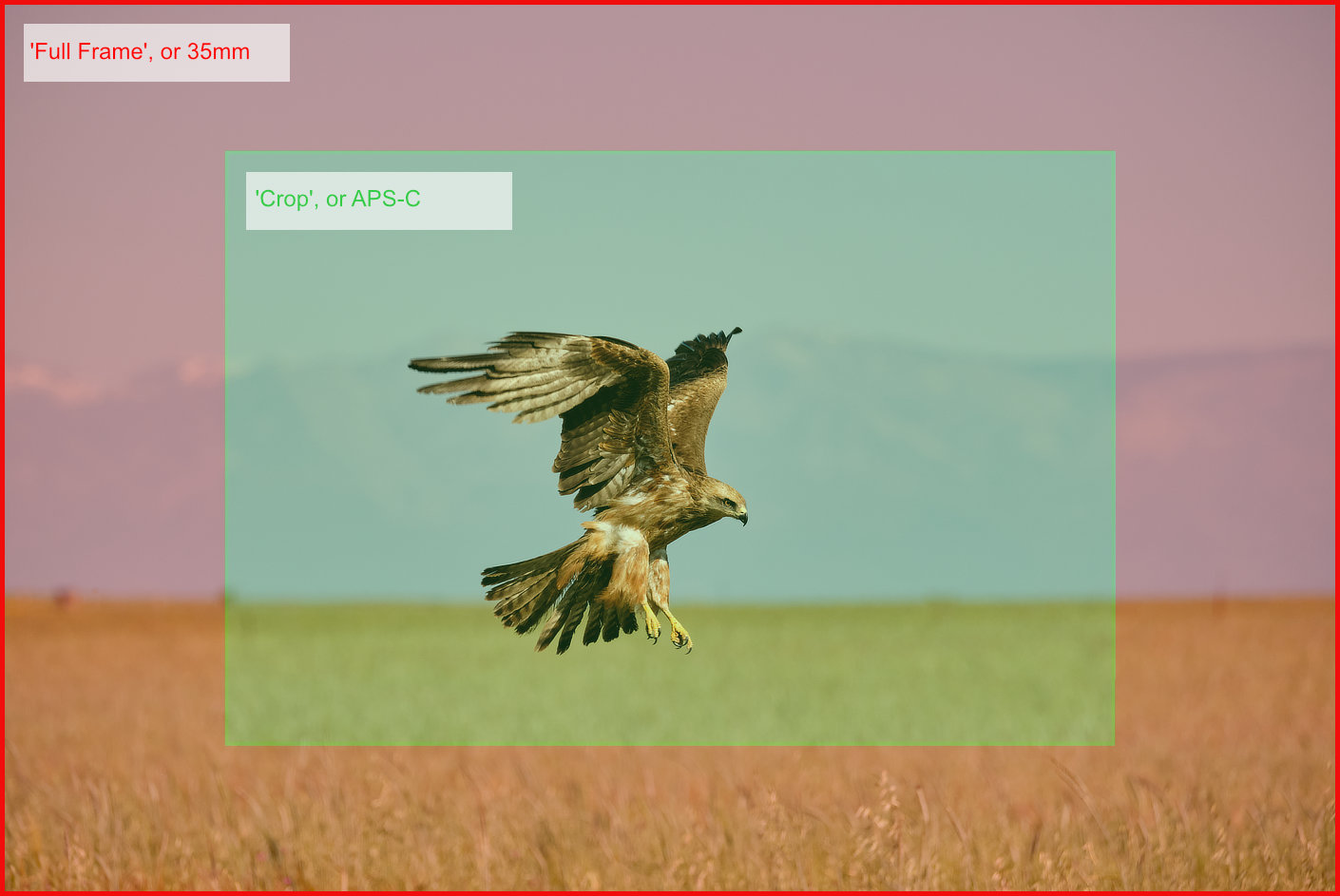How the ‘crop factor’ of digital cameras affects the focal length of a lens is the subject of many conversations I’ve had during photography workshops. At times it can be quite a misunderstood concept so I’ve written this blog to try and help clear up the confusion.
A BIT OF BACKGROUND
In the years before digital photography the most popular camera film frame measured 35mm from corner to corner. When the first digital sensors were designed and manufactured they were incredibly expensive, so much so it was financially prohibitive to use this 35mm size made popular by film. The solution was to make cameras with a smaller or cropped ‘APS-C’ sensor.
Nowadays, digital sensor technology is significantly cheaper to manufacture. As a result, camera manufacturers have a range of cameras which use 35mm sensors and more lately, larger ‘medium format’ equivalents are increasingly commonplace. So, the term ‘full frame’ is technically a bit strange as it seems to ignore the fact that larger formats also exist but it is now common place ‘industry-speak’. Also, ‘Four Thirds’ sensors which are smaller than APS-C are still widely popular.

African Wattled Lapwing (Fujifilm X-H1 & 100-400mm)
There are many more reasons why a camera with different size sensors may be suitable for an individual photographer other than the influence on the apparent focal length of a lens but it is this which is often the deal breaker or decision maker and photographically, it is the area where people see the fundamental differences. As a result it is probably the key characteristic which requires the photographer’s understanding.
HOW DOES IT AFFECT THE FOCAL LENGTH OF A LENS?
Most importantly it doesn’t physically increase the focal length of a lens. Optically a 300mm lens will always be a 300mm lens regardless of whether it is made for cameras with a cropped sensor or full frame.
What changes is the effective field of view seen by the camera sensor. An APS-C sensor is physically smaller so the field of view is smaller than that of a camera with a full frame sensor. It is much like looking at something through two different sized windows.
Take a look at the illustration below. The green and red represents the differences in the fields of view between a 35mm sensor and APS-C. Note, it isn’t exactly to scale, just an approximate illustration.
Lenses which are designed for cropped sensors are physically smaller than their 35mm equivalents because they require a more narrow channel for the light to pass through. You may still be able to use a lens designed for a APS-C camera on a full frame camera if you can set up the sensor to only use the smaller image area. If not you will get a very obvious lens vignette around the edges. However, some manufacturer’s dedicated APS-C lenses will not physically mount.
To calculate the effective field of view of APS-C cameras, multiply the focal length of the lens by the crop factor.
Fujifilm X mount cameras have a crop factor of 1.55x, this means my 100-400mm lens has an effective field of view of 155mm to 620mm. Nikon DLSR APS-C cameras have a crop factor of 1.5x. This means a 200mm lens has an effective field of view of a 300mm lens. Canon APS-C cameras have a crop factor of 1.6x and Olympus who use a ‘four thirds’ system have a crop of 2x.

SO, WHICH ONE IS THE BEST?
There is no real answer! Best at what?
I favour the APS-C system as the lenses are significantly smaller and usually lighter. There are other effects on depth of field and high ISO quality, but that’s probably another future blog post!
Ultimately it comes down to individual use. There is a commonly held misconception that 35mm is for professionals and APS-C is for amateur photographers. It’s a ridiculous way to look at it, we use whichever works for us and this is based on budget, how it fits with existing gear and approach and style of photography.
This blog post was originally written in July 2015 and updated in May 2020.



As you working to use Nikon D800 camera I may ask why you are not just taking photographs into the DX cropped sensor setting? This will suit I think you photography more than such the full frame setting up.
Thank you for your comment Ranol. I don’t particularly like using the DX setting as the redundant full frame area is still visible via the viewfinder. With anything moving quickly I find it more difficult to frame consistently as the box which appears to differentiate between the DX and FX areas is not obvious enough. I’d rather just use the full frame and apply any equivalent crop in Lightroom software afterwards when necessary. This software crop is no different to what the camera is doing changing from FX to DX in principle but it is much more flexible for final composition. Of course shooting in DX mode would give me an extra frame per second advantage but I don’t think this is worth the difference.
It would be nice if Nikon could find away to totally black out the redundant FX area when shooting in DX mode.
Thanks
Alan
Thank you so much for this blog Alan. You’ve made something sound so simple and easy to understand. It’s always had me confused. Yes it is simple really now that I’ve read this but only because you’ve taken a confusing issue and clarified it so well.
Hi, I’m glad you find it useful, regards. Alan